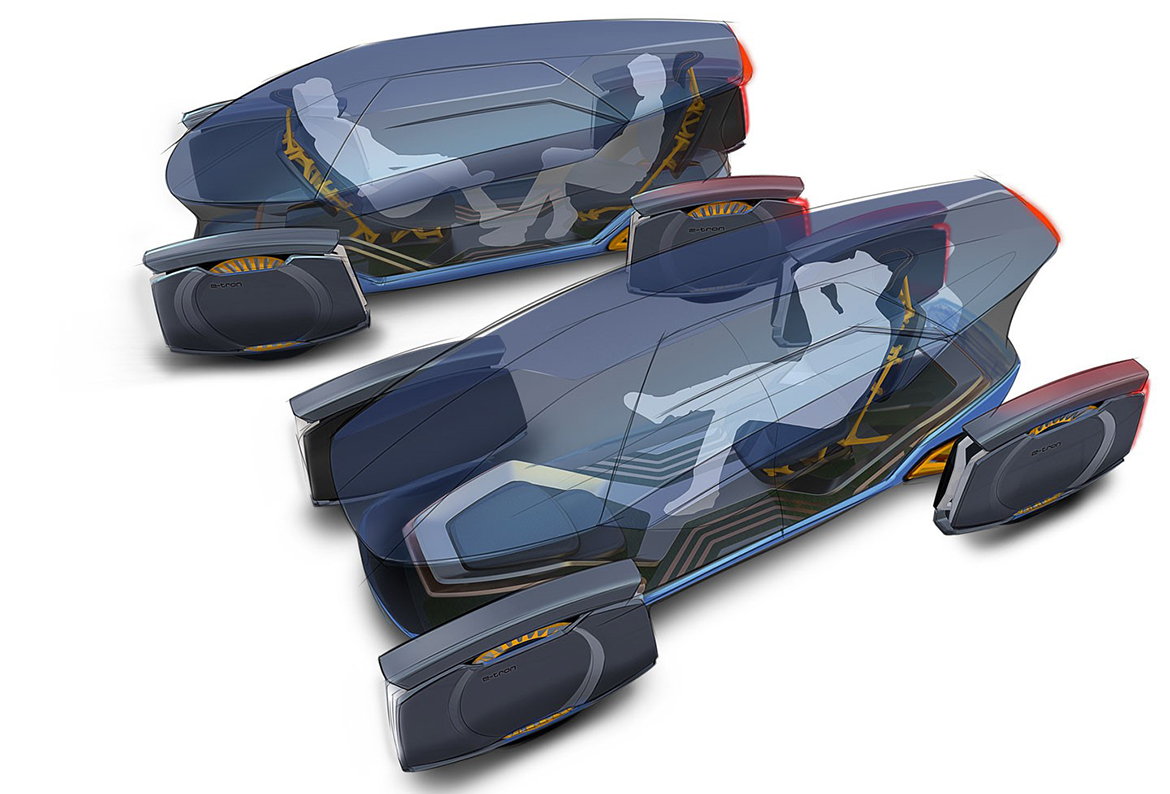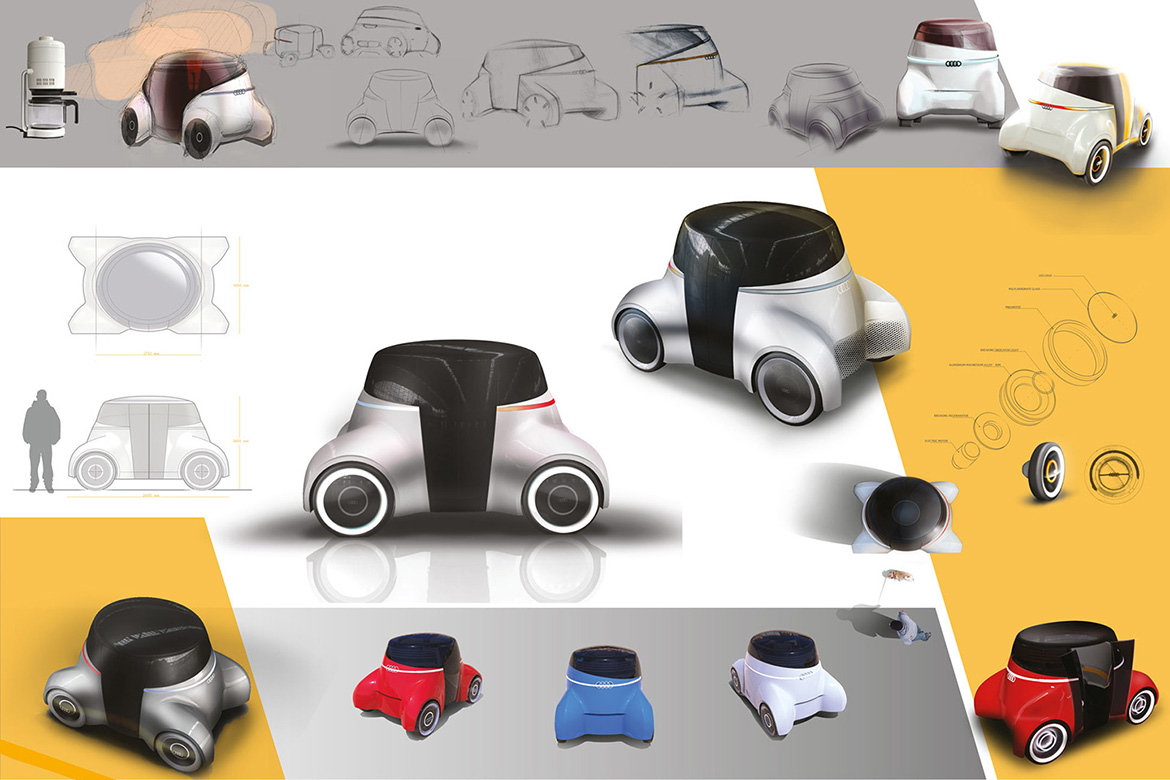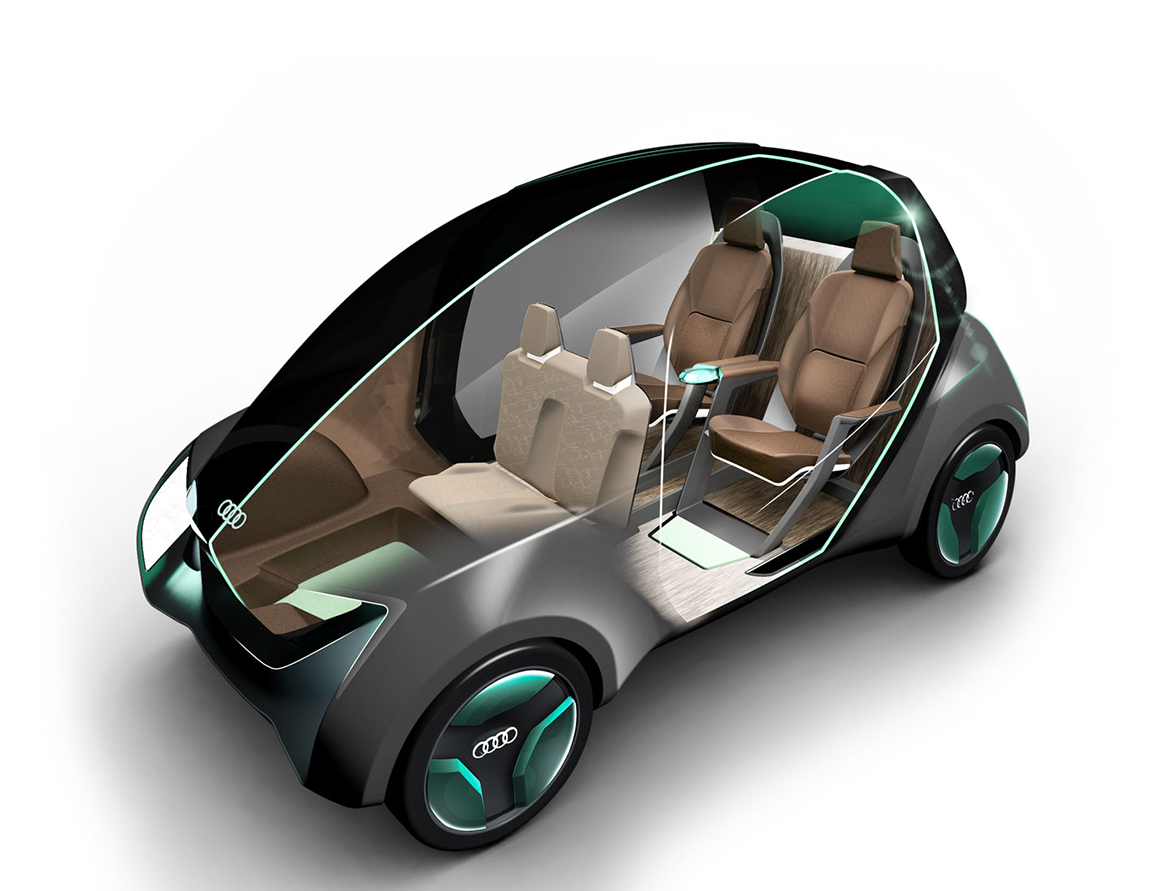How will we move and live in 2086, 200 years after the birth of the automobile? On the occasion of the exhibition ‘Motion. Autos, Art, Architecture (until 18 September) organised by the Norman Foster Foundation and the Guggenheim Museum in Bilbao, sixteen design and architecture schools from four different continents were invited to present their vision of the future of mobility. Among them, as the only Italian one, the School of Design of the Milan Polytechnic, which imagines and narrates the mobility of the future with an interactive installation at the end of the exhibition route.
This installation is composed of 12 projects, 6 of which were realised by the students of the Master in Transportation & Automobile Design, promoted by Politecnico di Milano and managed by POLI.design.
These are 6 very different concepts, conceived precisely with the aim of responding to the needs of the new mobility of the years to come, prefiguring transport solutions designed for the specific needs of certain categories of passengers, including those with physical problems. These projects were integrated into an exhibition project called Autofficina Futuro, curated by Luisa Collina and Ilaria Bollati, lecturers at the Politecnico di Milano, in collaboration with CamerAnebbia for the multimedia part, set up at the Guggenheim Museum in Bilbao.
4SENSES (Master TAD VII)
4senses is an Audi-branded self-driving concept car designed for a particular category of users: blind and visually impaired people. For this reason, every design solution was created to make their car journey extremely comfortable and safe. Notoriously, these people have their other senses more developed than normal: for this reason, various sensory experiences accompany the passenger through the cities and their most characteristic landmarks. The shape of the interior and exterior design is characterised by central symmetry, which enhances the vehicle’s bi-directionality and allows passengers to be safely on board. The project was realised by: Fabrizio Buonomo, Giuseppe Romano, Pasquale Smimmo.
CRISALIS (Master TAD X)
In the future, the need to optimise the use of urban spaces will become increasingly pressing, due to the growing number of vehicles in circulation, and in this sense sharing services could represent a sort of social need. However, for many users the desire for a private, exclusive, non-shared space will continue to be an indispensable component of their mobility.
Audi Crisalis proposes an answer to this need, inspired by the concept of the buggy, in which the (private) living space is separated from the (shared) locomotion system and is designed to minimise clutter when not in use. The living capsule consists of two rigid half-shells connected by a central band made of shape memory materials which, when folded, allows the volume of the living space to be reduced. The capsule, thus closed and detached from the external propulsion modules, is housed in a vertical position inside special parking stations. The interior is also designed to compact together with the capsule thanks to the load-bearing structures of the seats, made of special polymers. The project was realised by: Filippo Batavia, Jean Pierre Bruni, Edoardo Trabattoni, Pietro Tranchellini.
BUGATTI ESDERS (Master TAD VI)
Thinking of a Bugatti parading through the streets of Milan led to the design of a fascinating and seductive vehicle, refined and mysterious, inspired by Armand Esders, the famous owner of the first Bugatti Royale in the 1930s. The main strength of this concept lies in the shape of the vehicle itself, which has a marked stage presence. It appears as a particularly slender monolith, conceived with the objective of lowering emissions, also starting from its aerodynamic study. It comes in three configurations: with hard-top; with fabric soft-top without windscreen; as a roadster, with windscreen without roof. The most important features are the tapered shape of the body on the outside and the versatility of the interior space. The project was realised by the students: Andrea Bardusco, Riccardo Camponovo, Dai Pan (China).
FLO’ (Master TAD VII)
Inspired by the campfire, Audi Flò represents a new idea of transport. The elliptical shape encourages people to interact with each other and rediscover the pleasure of conviviality. The use of shape memory materials allows the seats to be transformed to create a travel-friendly atmosphere: a car for four or a living room for two with a small footprint. Blurring the boundaries between automotive and product design, the body wrapped around the cabin creates a unique car. By eliminating the convention of front and rear, Flò is designed to be bi-directional. The project was realised by: Daniel Ferrari, Salvador Reyes Guardado (Mexico), Ramprasadh Selvarajah (India).
HYLA (Master TAD XI)
In a hypothetical imaginary year 2050, in coastal cities such as Amsterdam, which are characterised by a close relationship between man and nature, rising sea levels and population growth will lead to a radical change in morphology. Therefore, the TAD Master designers envisaged the creation of modern floating districts, while preserving the historical essence of the city itself. There will be a need to move frequently from the floating district to the mainland and back again. Starting with the bicycle, the means of transport par excellence in this type of city, the BMW Hyla concept, a single-seater amphibious three-wheeled vehicle, was born. As an amphibious vehicle, the Hyla was developed as a modular vehicle adaptable to different types of use, so the categorical mantra in design was the principle that form had to go hand in hand with function. The project was realised by: Stefano Armento, Fabio Errera, Johna Gussoni, Andrea Lanzalotta, Pasquale Vitale.
JEWL.IN (Master TAD IX)
Audi Jewl.in is a 2+2 car, designed to facilitate the mobility of senior citizens who want to continue to have a particularly active life. It is designed to carry two adults on the rear seats, facilitating access, and two children on the front seats. The choice of interior configuration and materials denotes a premium product, tailor-made according to the tastes and needs of its users and family-friendly. The project was realised by: Gianluca Raciti, Giancarlo Temin, Esteban Wittinghan Quiñones (Colombia).
















